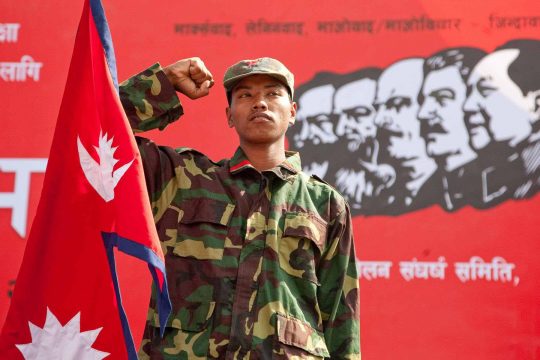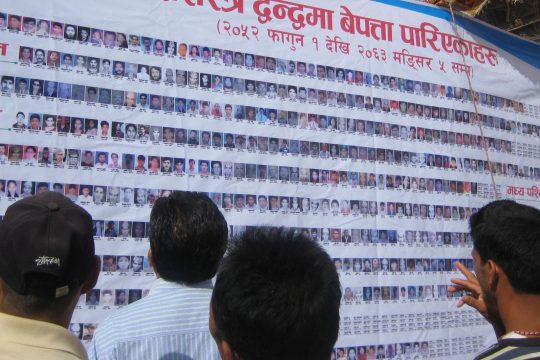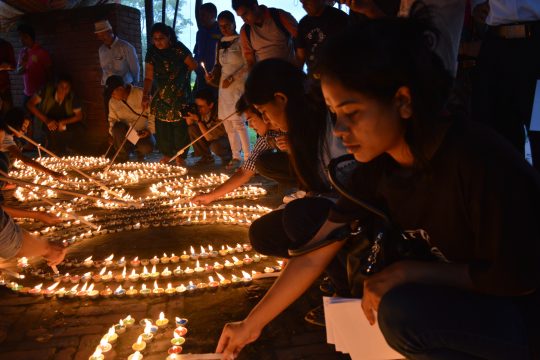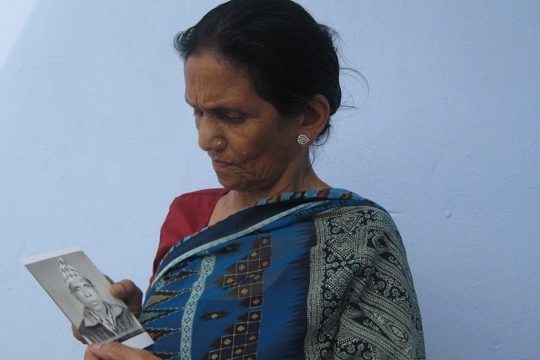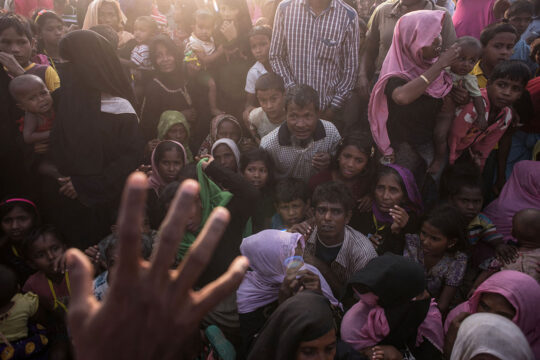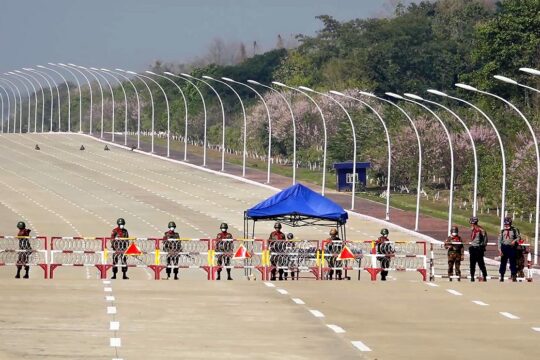This opinion will consider the background and dynamics of enforced disappearance in South Asia and suggest that given the regional nature of this problem, greater awareness and regional collaboration is needed to help address the issue and support those that continue to suffer from such rights violations. All families have the right to truth, justice, and reparations, the facilitation of which will help create positive social and political conditions for the common future.
South Asia has rich culture of peace, humane nature and solidarity campaign, people to people relation, social cohesion, sympathy and community reconciliation practices that still exist today. At the other hand, it has also suffered through numbers of inhuman practices, fights, ethnic tensions, class struggles, non-violent conflict and civil resistance through out the history. The South Asian governments seem not only poor in handling their governance, peoples’ resistance and human rights concerns, but also corrupt, inhuman, dictating from the top and not listening peoples’ voices to addressing the human rights and democratization process. The States often assert their commitments to human rights and democracy, but did not address in any specific detail issues that require action and peoples’ engagement.
Enforced disappearance is but one of many prevalent human rights issues across the South Asian region—a pernicious reality that impacts many thousands of individuals and families over extended periods of time, creating a host of unanticipated consequences. Many families suffer the loss of a breadwinner, spouses cannot remarry due to religious rites, and legal demands cannot be completed without confirmation of death; livelihoods suffer and children bear the brunt of being raised without parents. Above and beyond all this, families are tortured by not knowing if their loved ones are dead or alive, and while they continue to suffer, little is being done in a collaborative manner to help these people.
As defined by Article 2 of the United Nations International Convention for the Protection of all persons from Enforced Disappearance, ‘enforced disappearance’ is considered the arrest, detention, abduction, or any other form of deprivation of liberty by agents of the State or by persons or groups of persons acting with the authorisation, support, or acquiescence of the State, followed by a refusal to acknowledge the deprivation of liberty or by concealment of the fate or whereabouts of the disappeared persons, which place such persons outside the protection of the law.
Disappearances across the region
Nepal
During Nepal’s ‘People’s War’, more than 1,400 citizens were disappeared. The majority were taken by the State, though the Maoists rebels perpetrated disappearances as well. Indeed, the height of enforced disappearance in Nepal occurred in 2002, when the Saarc summit was last held in Kathmandu. Little progress has been made on the issue in the last decade since the end of the conflict and the signing of the Comprehensive Peace Agreement in November 2006. Currently discussions over the lack of law on disappearances, government political will and inactive commission for the investigation of enforced disappearances—have stalled due to protracted disagreement over the provision of amnesty to perpetrators. Countless cases have been filed with the Supreme Court of Nepal, but no trials have been held and no one has been punished for their crimes. By and large, families have received no news or information concerning the whereabouts or fate of their loved ones. Some have received minimal monetary relief, but livelihood difficulties persist. This, however, is a problem beyond Nepal, affecting the entire region, and as the suffering is similar faced everyday by the relatives of the disappeared.
India
In Kashmir, where India and Pakistan continue to disagree over territory, there have been between 8,000 and 10,000 cases of enforced disappearance between 1989 and 2006, according to the Asian Human Rights Commission. In India, this was in part spurred by the Armed Forces Special Powers Act of 1990, which created a culture of impunity by codifying immunity for armed forces in law. According to the Association of Parents of Disappeared Persons (APDP), the majority of those disappeared are young men from a range of professional and ethnic backgrounds—many of whom have no connection to armed opposition groups in Kashmir. Despite the number of instances of disappearance decreasing in recent years, the struggle of the families of those disappeared between 1989 and 2006 continues.
Sri Lanka
In Sri Lanka, cases of enforced disappearances have been prevalent since the 1980s, peaking every time conflict intensifies. According to the UN Working Group on Enforced Disappearances only Iraq rates higher in terms of total number of unsolved cases of disappearance. However, it should be noted that the numbers in Sri Lanka only account for registered cases. Most recently, February 2015, a mass grave was uncovered in Mannar, the first to be found since the end of the civil war in 2009. While the exact number of cases of disappearance in Sri Lanka is unknown, there were approximately 15,000 cases documented between 1988 and 1998 alone and it is suspected that there are tens of thousands of cases arising from both the Janatha Vimukhi Peramuna (JVP) uprising and the long war with the Tamil Tigers. Many cases have not been documented so far and still relatives of the disappeared and missing (specially from the Tamil communities – most affected area Trincomalee, Vavuniya, Mullaitivu, Killinochi Mannar, Batticola , Jaffnaetc) do not feel secured and free to speaking out, evidences have been destroyed by the authorities.
Afghanistan
In Afghanistan, decades of conflict and a lack of governance has led not only to a large number of disappearances perpetrated by the state—in its various incarnations—and a host of non-state actors, but a failure to even acknowledge the issue. The scale of deaths over the period of Soviet occupation, the civil war, and conflict with the Taliban is huge, and in many cases, families lack information about what happened to relatives. In 2013, a list emerged confirming the fate of almost 5,000 persons killed after arrest in the first 20 months of communist rule, following the 1978 coup d’état. However many more families continue to await news of the fate of relatives. Continuing conflict appears to make this unlikely. French scholar Oliver Roy estimates that 50,000 to 100,000 people have been disappeared in Afghanistan’s recent history.
Pakistan
Finally, in Pakistan, conflict continues in parts of the country, including in Balochistan, where an independence move has provoked a crackdown, and in the north, where the Pakistani Taliban are active. Cases of enforced disappearance have been growing in recent years. Reports vary wildly as to the actual number of disappearances, particularly between 2008 and 2010 with some stating only a handful and others suggesting that thousands have gone missing. Human Rights Watch published a report discussing the disappearance of 45 individuals between 2009 and 2010.
Nature of the States and Responsibility
These examples suggest that the issue of enforced disappearance is one that deserves the attention of the South Asian states in the global forum. The States have a duty to hear the thousands of voices of victims and family members, to address the ongoing humanitarian concerns and victims’ agendas pertaining to these crimes that have long been ignored and denied. Cooperation is crucial, not only at the highest political levels, but also to promote democratic practices, human rights, and social, economic, and cultural solidarity for national and regional cooperation. There is a need not only to address past cases, but ensure accountability and process to stop future disappearances. Around the issue of enforced disappearances, many family associations have no access to justice and national remedies in Sri Lanka, Nepal, India, and elsewhere; instead, the perpetrators and the politicians have a strong connection to protect criminals and avoiding justice mechanisms to the victims of violence. The States denial continues and not recognizing peoples’ demand to truth, justice and reconciliation at every context. The States must shift their policies of transition and delivery mechanisms in consultation with public through their engaged participation and representation.
Further, the heads of state and government must commit to ratifying the International Convention for the Protection of All Persons from Enforced Disappearance.
Nepal’s Supreme Court, in three historic rulings (June 1, 2007 and January 2, 2014, 26 February 2015) directed the Government of Nepal to criminalize disappearances based on international norms of human rights law and on the UN convention on enforced disappearances. However, the new disappearance legislation fails to define enforced disappearance as a crime against humanity and the UN convention on disappearances remains ungratified, and recently rejected the recommendations of UNHRC related to the ongoing faulty transitional justice mechanisms.
In Sri Lanka, based on the report of the Lessons Learned and Reconciliation Commission (LLRC), the President appointed a new commission of inquiry on disappearances, but it has not been and is unlikely to be effective, given the lack of effective consultation and participation of families and their associations. Ratification of the convention would support the national process to adopt international norms and open a door to international justice.
Common agenda for future
Addressing disappeared families’ demands and dealing with the past can be a common agenda that can connect states and sentiments of peoples. Families of the disappeared in all countries face similar problems and challenges. The desire for truth, justice, and reparations are universal, as is the need for a policy to support victim livelihoods through education, employment, social entrepreneurship, health, psychosocial, and memory initiatives. To end impunity and reduce future violations, the upcoming mechanisms and the commissions in the States can be lessons that can build trust and expertise at the national and regional level, and strengthen regional connectivity on human rights and dignity. States should develop a new framework of participatory democratic norms to support and strengthen civil engagement for truth telling, justice, reconciliation and improve victim agency. Heads of state and government should review past state actions and commitments and implement their previous declarations on human rights, and address current challenges in a principled human rights-based approach that can support development of a common agenda across the region.
Collaboration and progress on these policy initiatives would not be a simple matter, but would go a long way in creating a stable foundation for redressing past violations as well as exploring a model for a cooperation on human rights moving forward.
Route to Reconciliation: Focus on victims and local mobilization
In the post-conflict environment, justice and reconciliation efforts remain fragmented and the grief of thousands of victims’ families is being held hostage to political interests and a narrow legalistic understanding of transitional justice. The post-conflict politics and growing victimhood have seen the politicisation and commodification of victims while neglecting their individual dignity and failing to provide a constructive role for families and their associations and justice initiatives in Nepal, Sri Lanka and elsewhere. The political parties have succeeded in instrumentalising the victims’ justice agenda for political gain. Victims and survivors of violations have not been effectively re-integrated in their respective societies, causing tensions while the current transitional justice provisions fail to address the needs and demands of both victims and broader society for a fair and secure future.
The compromise, between the political parties and security institutions, ensures amnesty for past crimes without addressing the need for institutional change or democratisation of the security system. This compromise further demonstrates the lack of political will to promote a victim-centric or citizen-centric transitional process. In short, those in charge have managed to institutionalise a system that fails to acknowledge the past while simultaneously instrumentalising it for immediate political gain.
Reconciliation is both a goal and a process—long term, individual and communal healing can only be achieved at the community level through engagement and sharing among community members, including story-telling, and the creation of spaces for families through community platforms and local dialogue groups. Ideally, this should take the form of a micro-level initiative where every individual and family feels comfortable to take part in the social unit, creating a progressive socio-cultural environment. Unfortunately, to date, examples from Nepal, Sri Lanka and the regions, the state led so-called formal initiatives have largely failed to create such a foundation for reconciliation. Promoting a victim-centric approach that focuses on victims’ participation and their needs within society can play a significant role to change such dynamics. Various interests, particularly those prescribed by top-level actors, have taken control of the reconciliation process in various contexts such as Nepal and Sri Lanka. Achieving meaningful progress and reconciliation amidst these challenges will require new approaches and new ways of thinking about transitional justice, both nationally and locally.
As discussed earlier, the current political approach of reconciliation has failed to address the micro-level agenda of building peace from the community level. True reconciliation requires recognition and respect for the dignity of individual victims, families and communities. Therefor a community approach to reconciliation is needed. Politically, the government must seek to ground transitional efforts at the local level, working closely with those most affected to build the trust and relationships necessary to move towards reconciliation.
Politics aside, local efforts (at informal level) have the potential to create a space for reconciliation. For example, Nepal Hateymalo (Join-in-hands), an accompaniment programme of the International Committee of the Red Cross led by the families of the disappeared, has greatly benefitted relatives of the disappeared, creating an initiative to practice healing at the community level in support of true reconciliation and helping families to overcome psychological and social trauma. This programme has reached a majority of families of the disappeared and has been supportive in bringing them together to share their pain, suffering and life experiences. This has not only created a space for families but has also provided families with a path to a shared truth and empowerment within the community. Storytelling and sharing among family members has helped heal individuals and community members.
Likewise in Sri Lanka, International Coalition of Sites of Conscience’s Global Initiative for Justice, Truth and Reconciliation in collaboration with a local partner Institute of Social Development’s community mobilization and memory dialogue across conflict affected districts has a greater value of reconciling communities and providing them a space for dialogue and sharing their violent past to prepare not only for their future transitional justice process, but also for community reconciliation and mutual respect of humanity. Understanding such dynamics and engaging constructively in the community is not only useful in comprehending conflict analysis but also to foster comprehensive solutions in the post- conflict environment.
There are several local initiatives in the villages to strengthen community processes and locally-driven campaigns. Various family associations in the districts have been organising interactions and dialogue within victim’s families and with the media, civil society, women groups, youth clubs and local government and politicians to create spaces for themselves. In many cases, the victims’ initiative for local campaigns and to lead community reconciliation has not only given them agency but also a productive channel to establish their social and economic agendas.
The National Network of Families of the Disappeared and Missing, Nepal’s example of community initiatives, various micro-level income generating activities, publishing memory books, building local memorials such as monuments, gates, naming schools and streets, building taps and community meeting halls provide social recognition which is part of repairing and healing. Government and other agencies could learn from such initiatives that have created a potential route to reconciliation through mobilisation, dialogue and promoting local processes to support victims and the broader community to strengthen local democracy and respect peoples’ rights on a need basis, not from the prescription of outsiders or the top-level actors.
The value of a bottom up process at the individual and village level to the district level is an example of local efforts that should be encouraged and replicated. Programmes such as Hateymalo from Nepal and ‘from Memory to Action’ as community dialogue initiative in Sri Lanka through facilitation and constructive dialogue show the tangible impacts of locally-driven reconciliation mechanisms. Whilst political efforts to reform state and security institutions will be crucial for long term national peace and sustainability, post-conflict reconciliation must reach all citizens of the nations/elsewhere, whatever their relationship to the fissures of the conflict. To move forward effectively will require a greater concentration on locally-driven efforts and community based activism that will allow us to transcend the problems and challenges that persist nationally. Such community led nonviolent approaches to justice through respecting humanity and peaceful co-existence can help build a sustained community reconciliation locally and globally.



